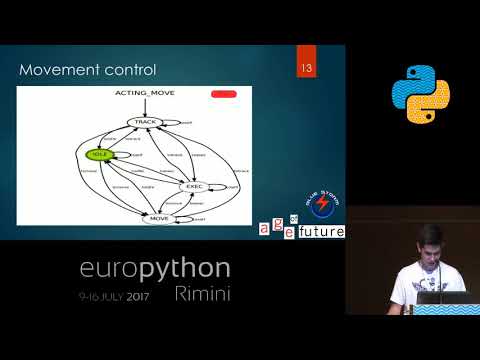Description:
Explore a robotic platform designed for natural and effective human-robot interaction in this 45-minute talk from EuroPython 2017. Delve into the application of artificial intelligence techniques in humanoid robotics, focusing on interaction through speech, gestures, and facial expressions. Learn about the Python-based system built on the Robotic Operating System (ROS), including hardware and software configurations of the NAO-based humanoid platform. Discover the use of high-level Python libraries for spoken language processing, sentiment analysis, vision, and AI interfacing. Understand the system's architecture based on finite state machines and ROS communication layers. Examine potential applications in entertainment, education, field robotics, home companionship, hospitality, and Robot Assisted Therapy (RAT). Gain insights into the platform's current status, challenges, and future developments, concluding with a live NAO-based demonstration showcasing speech recognition and other capabilities.
Read more

A Robotic Platform for Natural and Effective Human-Robot Interaction
Add to list
#Conference Talks
#EuroPython
#Computer Science
#Artificial Intelligence
#Programming
#Programming Languages
#Python
#Automata Theory
#Finite State Machine
#Engineering
#Robotics
#Human-Robot Interaction
#Computer Vision
#Gesture Recognition
#Speech Recognition